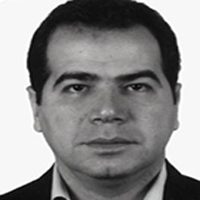Investigation of Influence of Cultivation Method on Karela (Momordica charantia) Yield under Different Levels of Urea Fertilizer and Poultry
Karela is an economic medicinal plant belonging to Cucurbitaceae family. The production of karela plays a significant role in the country's economy due to its medicinal effect in diabetes control, simple processing and reasonable price. Karela production could be easily expanded because of farmers are well familiar with the production process of Cucurbitaceae plants. In addition, the high potential of Kermanshah province in the production of medicinal plants, karela cultivation can create employment, reduce the amount of water consumed during the production process, and reduce the migration of villagers to cities. Cucurbitaceae plants cultivation by flat method has several disadvantages such as occupying a lot of space and limitation on applying new irrigation systems. However scaffolding method provides some advantages such as water losses reduction, harvesting easiness, and higher light absorption. On the other hand, alternative organic fertilizers should be applied to produce medicinal plants where the application of chemical compounds is more limited. Poultry manure is a suitable source for this aim due to its reasonable price and high nitrogen amount, and also its positive effect on increasing the biological capacity and microbial activity of the soil. Therefore, according to the importance of reducing the use of chemical fertilizers and also the advantages of scaffolding cultivation compared to flat cultivation, this experiment was carried out with the aim of determining the effect of type of nitrogen supplier source and the cultivation method on the yield and yield components of karela.
A field experiment was conducted as split plot based on randomized complete blocks design to investigate the possibility of replacing poultry manure with urea fertilizer, and also study of effect of flat and scaffolding cultivation methods on the karela production (cv. Jaunpur) at the research farm of Razi University during 2021. The main plots included urea and poultry manure and their combination (100 % urea, 75 % urea + 25 % poultry manure, 50 % poultry manure + 50 % urea, 25 % urea + 75 % poultry manure, and 100 % poultry manure). Half of the urea fertilizer in combination with poultry manure was added to the soil at the same time as the sowing date while the other half was added at the four leaves stage. Poultry manure was also covered with a layer of soil so that it did not decompose in front of direct sunlight. Two types of cultivations methods including flat and scaffolding were used as sub-plots.
Results showed that reducing urea consumption and replacing it with poultry manure caused a significant increase in fresh and dry weight of fruits. So that green fruit yield under urea consumption was significantly lower than that of under poultry manure application (879.17 and 1157.92 g m-2, respectively). In addition, scaffolding cultivation method increased the economic yield and harvest index comparing to flat method. The soil of the experiment site was facing a severe deficiency of iron, manganese, zinc and boron. This deficiency had been also aggravated because of the high pH and lime of the experiment site along with the high amount of bicarbonate in the irrigation water (6.2 meq L-1). Addition of poultry manure with low acidity (6.6) can adjust the pH of the soil and increase the absorption of micro nutrients. Based on the results as well as the correlations that were common in both flat and scaffolding cultivation, in scaffolding cultivation there was a relationship between a number of traits such as plant height and fruit weight, plant height and fruit dry weight, and a positive correlation was also observed with fruit length. Considering the absence of the mentioned correlations in the flat cultivation, the reason for this issue could be attributed to the effect of scaffolding and growth at a higher heights than the soil level and the absorption of more light and better stomatal conductance.
The results of this experiment showed that the use of the scaffolding method and the replacement of poultry manure with urea would be economically important due to preventing the disadvantages of flat cultivation and reducing dependence on chemical inputs. Poultry manure could be considered as suitable alternative to chemical fertilizers due to increasing quantity and quality crop yield, the reduction of harmful biological effects caused by the use of chemical fertilizers and the food security improvement. Also using of scaffolding with more durable materials can have more economic justification in the following years and even could be used for other processed products in crop rotation. In addition, with scaffold cultivation, it is possible to plan for the implementation of multi-cultivation types and get more income by using more space and light.
- حق عضویت دریافتی صرف حمایت از نشریات عضو و نگهداری، تکمیل و توسعه مگیران میشود.
- پرداخت حق اشتراک و دانلود مقالات اجازه بازنشر آن در سایر رسانههای چاپی و دیجیتال را به کاربر نمیدهد.


